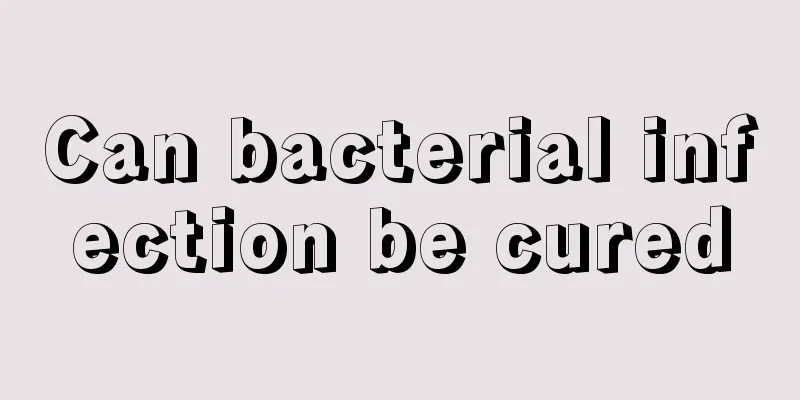Can bacterial infection be cured

|
Bacteria and viruses are substances that we humans cannot see with our naked eyes, but these tiny substances can harm the human body and threaten human life and health. When the time is right, bacteria sometimes invade the human body and infect various organs through blood circulation. When faced with this type of infection, there are several ways to treat it. General and symptomatic treatment: bed rest, enhanced nutrition, and appropriate vitamin supplements. Maintain water, electrolyte and acid-base balance. Blood transfusion, plasma, albumin and immunoglobulin were given when necessary. Physical cooling can be given for high fever, and sedatives can be given to those who are irritable. Pathogen treatment: Timely selection of appropriate antimicrobial drugs is the key to treatment. Attention should be paid to early treatment, adequate dosage and the use of bactericides as the main agents; generally two antibacterial drugs are used in combination, mostly intravenously; the first dose should be larger, attention should be paid to the half-life of the drug, and the drug should be administered in divided doses; the course of treatment should not be too short, generally more than three weeks, or 7 to 10 days after the fever subsides before the drug can be stopped as appropriate. Before a positive culture result is obtained, medication can be given based on the type of pathogenic bacteria inferred from the bacterial invasion route and clinical manifestations. If a positive culture is obtained but the treatment effect is poor, appropriate antimicrobial drugs can be selected based on drug sensitivity tests. After all, the properties of each type of bacteria are different, and the treatment methods and types of drugs used are also different, which are all things that need attention. Treatment of local lesions: Purulent lesions, whether primary or migratory, should be promptly punctured or incised and drained with appropriate and adequate antibiotics. For purulent pleurisy, joint abscess, etc., antibacterial drugs can be injected locally after puncture and drainage. Surgical treatment should be considered when bile duct and urinary tract infections are accompanied by obstruction. With the continuous advancement of technology, the treatment of bacterial infections is no longer a big problem, so just rest assured. Generally speaking, bacterial infections are treated by injecting pathogens. If the condition is serious, surgical treatment can only be considered. This depends on the patient's condition, and the patient must truthfully inform the patient of his or her condition. |
<<: What are the harms of toxins to the body
>>: What is the cause of chest pain when coughing
Recommend
How to eat onions to lose weight? The onion weight loss recipes are actually these
Onions are a food that we often eat in daily life...
What are the complications after total gastrectomy for gastric cancer?
Gastric cancer patients can survive for several m...
Normal baby lip color
A person's lips mainly function as a function...
Expectorant and anti-inflammatory drugs
Due to the current serious air pollution, most pe...
Why does my child blink frequently?
If a child blinks frequently in daily life, paren...
Why is my lower back hurting these days?
If you always feel lower back pain, you should pa...
What are the types of prostate cancer?
Prostate cancer is a relatively serious tumor. Wh...
How long can a person in his 60s live with uterine cancer
The survival time of people in their 60s with ute...
What to do if you eat durian and drink alcohol
Although durian is a fruit that is very beneficia...
Dietary standards for colorectal cancer
What are the dietary standards for colorectal can...
Coughing and body aches
After a person coughs for a long time, he will fe...
What is required for the diagnosis and examination of cardiac cancer
What are the diagnostic tests for cardiac cancer?...
What should people with potassium deficiency pay attention to
The most important thing for people who are defic...
What should I do if I have head lice? Teach you a trick to defeat the enemy
If you have lice on your head, your scalp will it...
What is the hard lump on my palm?
In real life, pimples are a familiar symptom for ...









